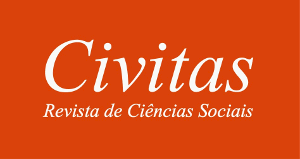Abstract
This paper provides an in-depth analysis of the changing structure and consequences of the links between the educational system and labor markets in Brazil in the past 30 years. Using the linkages methodology proposed by DiPrete et al. (2017)DiPrete, Thomas A., Thijs Bol, Christina Ciocca Eller, and Herman G. van de Werfhorst. 2017. School-to-work linkages in the United States, Germany, and France. American Journal of Sociology 122 (6): 1869–1938. https://doi.org/10.1086/691327.
https://doi.org/10.1086/691327...
and Elbers (2021)Elbers, Benjamin, Thijs Bol and Thomas A. DiPrete. 2021. Training regimes and skill formation in France and Germany an analysis of change between 1970 and 2010. Social Forces 99 (3): 1113-45. https://doi.org/10.1093/sf/soaa037.
https://doi.org/10.1093/sf/soaa037...
, we identify changes in education-occupation linkage that were offset by Brazil’s rapid educational expansion, distinguishing between changes in rates and changes in the structure of school-to-work linkages. We find that the overall compositional shift towards higher educational levels did not have substantial effects on occupational allocation, yet the trends for younger and older workers, as well as for workers with different fields of study in the tertiary system, were fundamentally different. Our findings suggest that the features of educational expansion in Brazil – i.e., privatization, field of study concentration, and quality discrepancies – contributed to a weakening of the links between education and occupational systems.
Keywords
Linkages; Education; Occupations

 Thumbnail
Thumbnail
 Thumbnail
Thumbnail
 Thumbnail
Thumbnail
 Thumbnail
Thumbnail
 Thumbnail
Thumbnail
 Source: IBGE – Censuses 1991, 2000, 2010, microdata.
Source: IBGE – Censuses 1991, 2000, 2010, microdata.
 Source: IBGE - Censuses 1991, 2000, 2010, microdata
Source: IBGE - Censuses 1991, 2000, 2010, microdata
 Source: Brazilian Census, own calculations.
Source: Brazilian Census, own calculations.
 Source: IBGE -Censuses 1991, 2010, microdata
Source: IBGE -Censuses 1991, 2010, microdata
 Source: IBGE - Censuses 1991, 2010, microdata
Source: IBGE - Censuses 1991, 2010, microdata